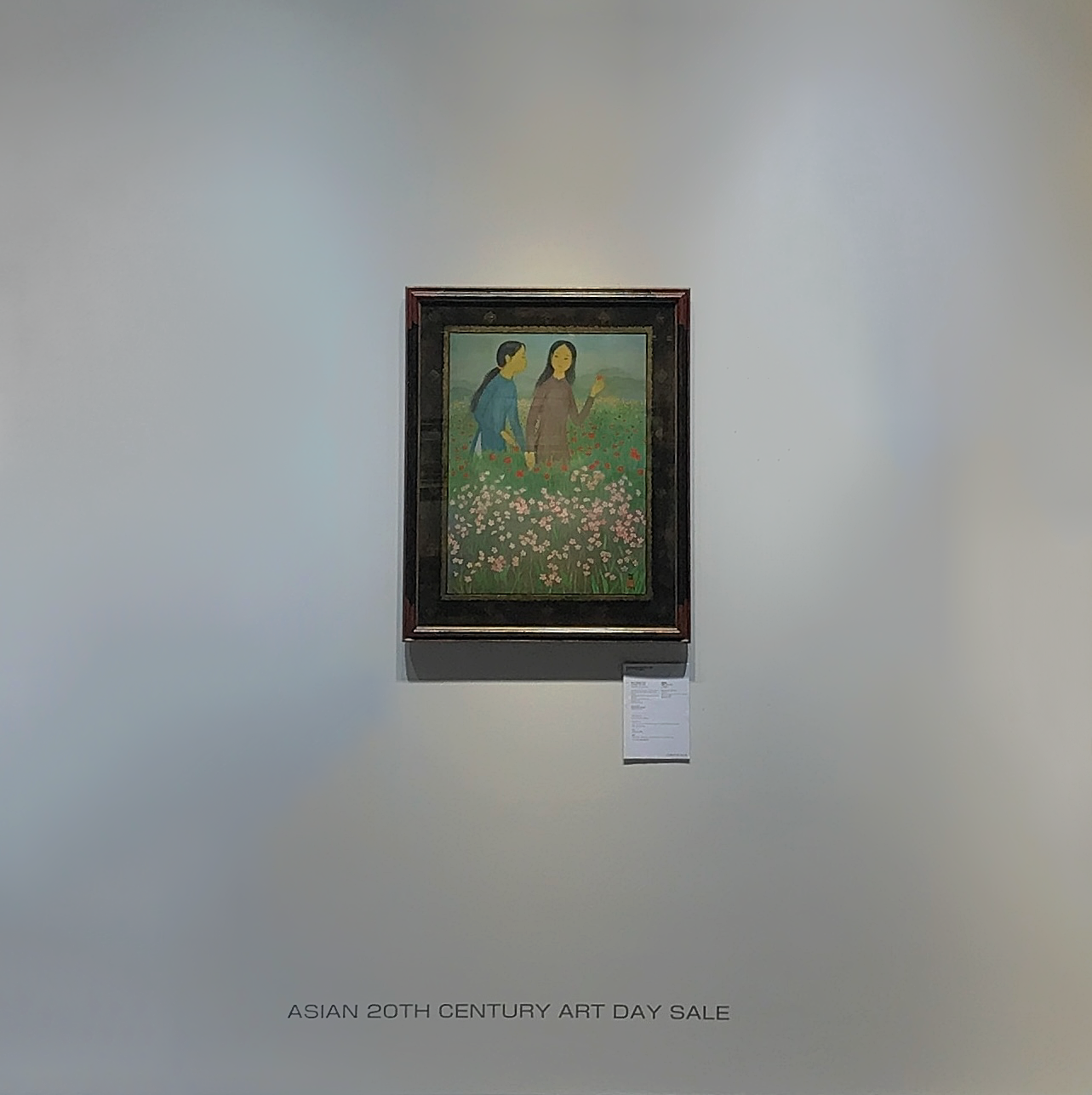
Mai Trung Thu (Vietnam/France, 1906-1980)
Champ de Fleurs
signed 'MAI THU' and dated in Chinese '1979' (lower right); titled
'Champ de Fleurs' (on the reverse)
ink and gouache on silk in hand-carved frame by the artist
60 x 46 cm. (23 5/8 x 18 1/8 in.)
Painted in 1979
one seal of the artist
Price Realised HKD 687,500 at Christie's Hong Kong, 28 May 2017

A lot is known about the painter Mai Thu (1906-1980): his birth in a Mandarin's family in North Vietnam, his brilliant studies in the Indochina Fine-Arts School (Hanoi) from 1925 to 1930 and from which he graduated in the top class. He moved to France in 1937 for a new life after leaving the Lycee of Hue where he was working as an art teacher. Origin, education, the quest to travel out west are many similar points he shares with his lifetime friends and contemporaries, the painters Le Pho, Vu Cao Dam and Le Thi Luu.
Mai Thu, became renowned quickly for his works on silk. The main defining difference for him from his friends was that he remained the most 'Vietnamese' of all, despite his genuine love for his adopted country France. He was a connoisseur in all things artistic and also explored other cultural art forms such as music and cinema which he was greatly talented in.
He composed his art pieces to offer the vision of a nostalgic but also a proud Vietnam where (mainly) women and child remain the true messengers of happiness, elegance and immanence.
Even though it was his choice to leave his home country, the painter, throughout his life never ceased to worry about its destiny. He saluted the end of the war in 1975, and carried hope in the reunification of his country. Our painting, dated 1979, shows however some disillusion: the flowers are universal and the two young ladies holding hands, symbols of the North (red) and the South (blue), do not translate the power of unification but more a sense of a journey happening. The faraway mountains in the background illustrate more then they testify. This scene set outdoors is rare in his body of work compared to the mostly interior scenes he painted and is striking by its discreet symbolism.
The masterwork mentioned here is a perfect illustration of the painter's talent at his best with its original hand-carved frame by the artist.
Jean-Francois Hubert










